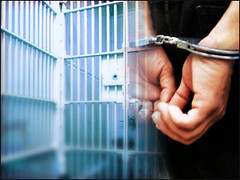The reliance on Camp Gabriels extends well beyond jobs. Small businesses have staked their survival on the prison workers who patronize their stores. Local governments and charities, meanwhile, have come to depend on inmate work crews to clear snow from fire hydrants, maintain parks and hiking trails, mow the lawns at cemeteries and unload trucks at food pantries.
....Four of Mrs. Keith’s nine children work in state prisons, she said, including a son and a daughter at Camp Gabriels. “Everyone around here either works in the prisons, or has a relative who works in the prisons, or knows someone who works in the prisons,” said Mrs. Keith, 78. “My kids were able to build their homes and raise their families here because of the prisons. If it weren’t for the prisons, they would have had to leave the area.”
The entire county feeds off prisons.
The correction industry is big business in Franklin County, which has five state prisons and one federal prison in its 1,678 sparsely populated square miles. In the town of Brighton, which encompasses Gabriels and five other hamlets, the prison is perhaps the only place where someone with a high school diploma can earn a decent wage and benefits.
“There ain’t much else the local people could do for gainful employment,” said Peter Martin, 48, the town’s supervisor and a corrections officer at Camp Gabriels for 22 years.
There are political ramifications as well:
Prisons are also a valuable political tool, because inmates are counted as local residents, allowing communities to receive more state and federal aid for emergency services. Mr. Martin said that he was not yet sure how the town of Brighton stood to lose if Camp Gabriels closed, but he added, “We’re concerned about losing any kind of aid here.”
Conservatives get it.
Edmund J. McMahon, director of the Empire Center for New York State Policy, a conservative group [says] “There should be other ways of improving the economic situation in upstate New York that doesn’t involve filling upstate New York with prisons.”
Labor unions, on the other hand, don't get it.
Union leaders and many Camp Gabriels workers said they would not give in easily, though. They organized a rally in Saranac Lake on Thursday and a letter-writing campaign, hoping to convince state legislators that the prison was worth saving.
A new book arrived in my mailbox this week, "Prison Profiteers: Who Makes Money From Mass Incarceration?" Its contributors include lawyers, ex-prisoners, journalists and advocates.
Some stats: The U.S. accounts for 5% of the world's population but is responsible for incarcerating 25% of the world's inmates. In the last 30 years of our get tough on crime policy, our state and federal prison population has jumped from 300,000 to 2.3 million.
The book examines who profits from our policies of mass imprisonment. The answer ranges from "investment banks that issues bonds for prison construction to the companies that staff and manage the prisons to the organizations that provide health care."
The book finds that $186 billion tax dollars a year "intended for the public good" goes to "private prison companies, churches, investment banks, guard unions and medical corporations."
Bottom line: 1 of every 137 Americans is in prison today. And we're paying for it.




